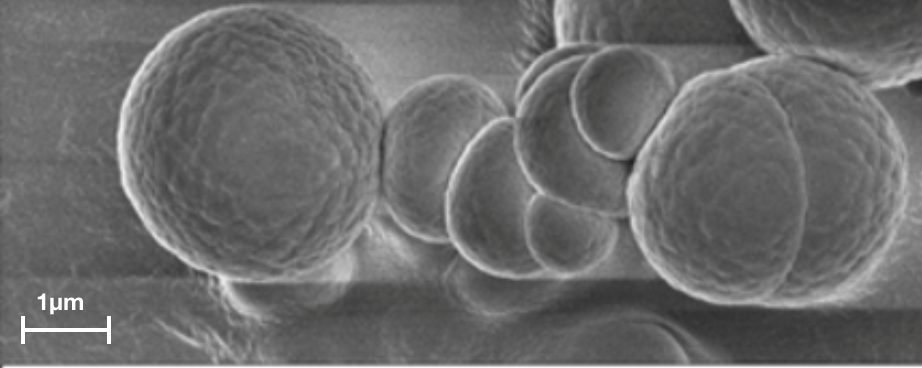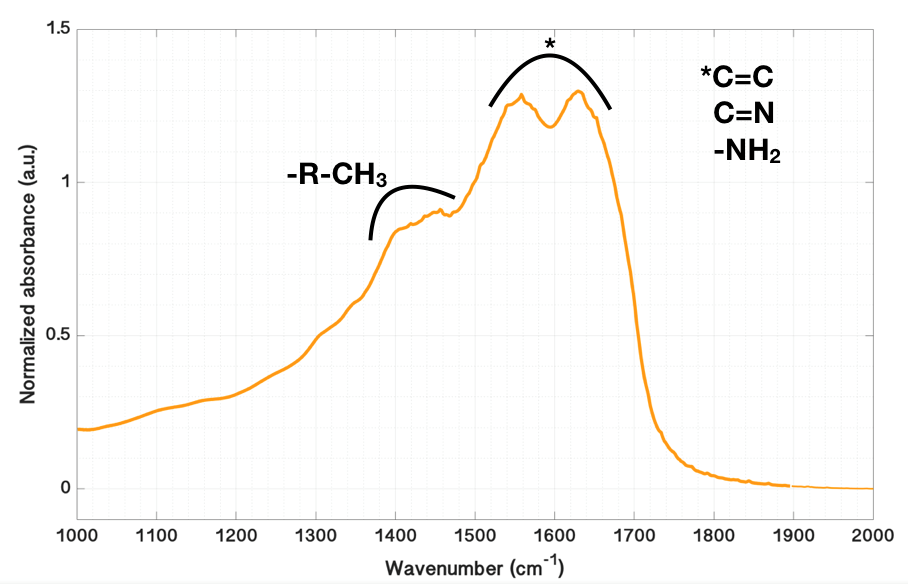An atmospheric origin for HCN-derived polymers on Titan
- 1CNRS/LATMOS, Université Paris-Saclay/UVSQ, Guyancourt, France
- 2LGPM, Centrale-Supélec, Gif-sur-Yvette, France
- Introduction
Titan, Saturn's largest moon, has a thick nitrogen-based atmosphere, where during its flyby, the IRIS infrared spectrometer aboard the Voyager 1 spacecraft detected nitriles, such as HCN, formed by EUV photochemistry based on methane CH4 and molecular nitrogen N2. Titan is also surrounded by an organic photochemical haze, according to the observations of the Cassini-Huygens and Voyager 1 missions.
In-situ measurements by the Huygens spacecraft [1], and laboratory experiments synthesizing Titan analog aerosols (called tholins), have revealed that HCN is one of the major chemical signatures extracted from the aerosols, and their laboratory analogues.
Laboratory experiments were conducted using a powder plasma reactor mimicking Titan's ionosphere, replicating the formation of Titan-like organic aerosols, and the associated chemistry. In this work, we simultaneously study the temporal evolution of HCN present in the gas phase, and the formation and growth of Titan tholins.
- 1 - Aerosol production
Analogues of Titan aerosols are formed using the experiment PAMPRE [4]. PAMPRE is a reaction chamber, where a cold radiofrequency plasma capacitively coupled is ignited at low pressure (~0.9 mbar). A gas mixture of 95% N2 and 5% CH4 is introduced into the reactor. Subsequently, a 12W discharge is generated between two electrodes, which ionizes the N2 and CH4 present.
In this plasma, the radicals and products formed by ionization of methane and nitrogen, will combine by several reaction pathways, to form more complex organic particles and nitriles such as HCN, in the same way as in the ionosphere of Titan.
In this study, the gas flow rate was optimized, to increase the residence time of the gas mixture in the reactor as much as possible. The chemical growth of the solid particles is thus favored, allowing to follow simultaneously the formation and the evolution of the particles, as well as the co-evolution of the gas mixture composition.
- 2 - Morphology analysis of tholins by scanning electron microscopy
The formed samples were observed by scanning electron microscopy (SEM field emission gun).

Figure 1 - SEM picture of Titan tholins obtained after 160 s in the discharge
The images show primary nanometer monomers coagulated and formed aggregates (Figure 1). These aggregates continue to evolve to form single spherical particles of ~1.5 µm in diameter (Figure 1). These experimental results are in agreement with the evolution predicted by the model [2] on aerosols residing in the atmosphere of Titan.
- 3 - Chemical analysis of tholins by infrared spectroscopy
Absorbance measurement is performed using an FTIR, on pellets composed of ~ 99.6% KBr and ~ 0.4% tholins. Three absorption bands stand out on the mid-infrared absorption spectrum. In particular, the intense bands at 1560 cm-1 and 1630 cm-1 (Figure 2) which correspond to different functional groups, such as aromatic or aliphatic -NH2, C=N, C=C, aromatic or heteroaromatic groups, difficult to distinguish from each other. The presence of these nitrogenous aromatic compounds can be promoted by HCN [3] [5].

Figure 2 - Normalized IR spectra showing the aromatic or aliphatic groups bands
- 4 - Conclusions and Perspectives
The growth of the particles could be observed by the SEM analysis. Moreover, the IR analysis shows the presence of nitrogenous chemical bonds, corresponding to aromatic compounds or nitrile. This growth may be due to the incorporation of HCN chemistry on the surface of the tholins. Indeed, MS analysis of the gas phase shows a progressive consumption of HCN during the formation and growth of Titan tholins. Our experimental results are consistent with numerical models based on Cassini-Huygens observations: A formation of atmospheric HCN on Titan, and its efficient incorporation in Titan’s haze to produce large organic polymers.
References
[1] Israël G. et al., Nature 438 : 796-99 (2005).
[2] Lavvas P. et al., The Astrophysical Journal (2011).
[3] Imanaka H. et al., Icarus, 168: 344-66 (2004).
[4] Szopa C. et al., Planetary and Space Science 54 (2006).
[5] Gautier T. et al., Icarus, 221, 320-327 (2012).
How to cite: Perrin, Z., Carrasco, N., Chatain, A., Jovanovic, L., Ruscassier, N., Vettier, L., and Cernogora, G.: An atmospheric origin for HCN-derived polymers on Titan, European Planetary Science Congress 2021, online, 13–24 Sep 2021, EPSC2021-491, https://doi.org/10.5194/epsc2021-491, 2021.

